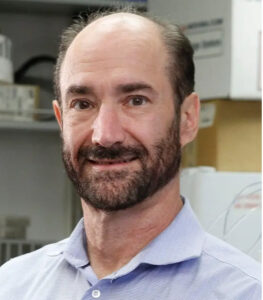How much information can your DNA reveal about your health?
In this What That Means video, Camille talks with Dr. Michael Snyder, Chairman of Stanford University’s Department of Genetics. They get into personalized medicine with big data on genetics, whether or not reverse aging is possible, and the latest developments in genetics.
Making Personalized Medicine More Personal with Big Data
One of the most important developments in genetics right now is access to big data and artificial intelligence to process the data. Big data can be collected through things like genome sequencing, microbiome sampling, and wearable health monitoring devices. With all of this information, doctors can take more detailed health measurements, predict genetic risks for disease with greater accuracy, treat patients with diseases before symptoms appear, and even prescribe medications specifically based into a patient’s genetic and health data. In other words, personalized medicine is becoming more personal.
Is Reverse Aging Possible?
People still can’t live forever, but Michale believes reverse aging, even to the point of preventing death, will be possible someday. For now, we have much smaller-scale reverse aging technology like pacemakers, senolytics, and—most promisingly—stem cell research. While stem cells have great potential to help the body heal and repair itself over time, there are still concerns about whether or not rejuvenating stem cells might cause cancer through uncontrolled growth.
The goal of reverse aging is to help people live longer and healthier lives, but there are some social and ethical concerns that come with that. For example, we can help people physically live longer, but scientists cannot yet delay diseases like dementia. There are also environmental concerns from people living longer lives and the Earth’s growing population.
What’s New in Genetics?
One of the biggest changes to healthcare today is including genetic data as part of patient health monitoring, along with the rise in health monitoring itself. By having a complete picture of a patient’s health, genetics, lifestyle, and environment, doctors can provide more preventative and early treatments. In just a few drops of blood through micro sampling, for example, scientists can measure thousands of molecules to gain detailed insight on a patient’s health.
DNA editing techniques like CRISPR are also revolutionizing healthcare. These techniques alter or add genes to patients with diseases like muscular dystrophy and sickle cell anemia to help their bodies reverse the effects of the disease. Right now, blood diseases are the easiest to treat with gene editing. Treating other diseases with these methods is still far off, but scientists are learning more every day.
Dr. Michael Snyder, Chairman of the Department of Genetics at Stanford University

Michael Snyder is Chairman of the Department of Genetics, Director of the Center for Genomics and Personalized Medicine, and a Professor at Stanford University. He is a globally-recognized expert and has spent over twenty years teaching and researching genetics at Yale University and Stanford University. Michael has a Ph.D. in Biology from The California Institute of Technology.
Check it out. For more information, previous podcasts, and full versions, visit our homepage.
To read more about cybersecurity topics, visit our blog.
#genetics #personalizedmedicine #healthmonitoring
The views and opinions expressed are those of the guests and author and do not necessarily reflect the official policy or position of Intel Corporation.
—–
If you are interested in emerging threats, new technologies, or best tips and practices in cybersecurity, please follow the InTechnology podcast on your favorite podcast platforms: Apple Podcast and Spotify.
Follow our hosts Tom Garrison @tommgarrison and Camille @morhardt.
Learn more about Intel Cybersecurity and Intel Compute Life Cycle (CLA).
